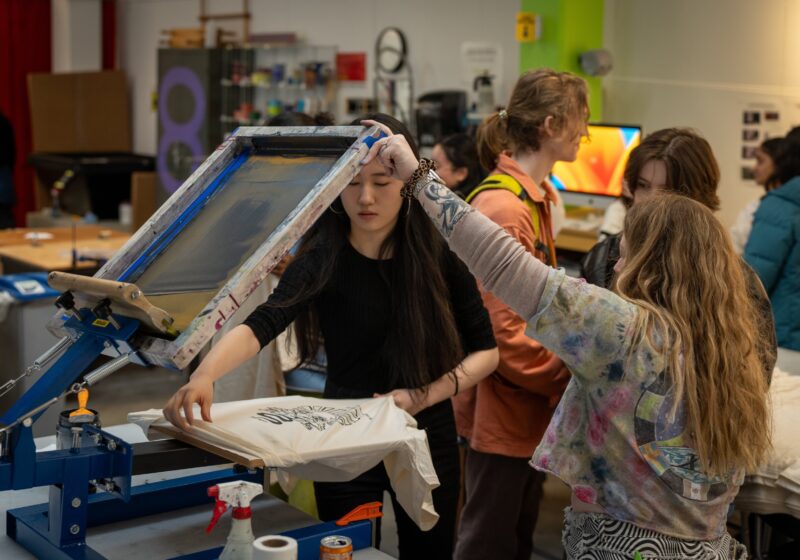“The American Image,” which recently closed at the Bevier Gallery at the Rochester Institute of Technology, is an exhibit of the history of American poster design. The exhibit encapsulates the last 100 years of graphic design in America in the featured posters by a range of designers and artists.
The posters depict a variety of subjects and themes and show myriad influences. The 78 posters in this show are selected from an extensive collection owned by Mark and Maura Resnick, the largest collection of American posters outside the Smithsonian Institution.
This exhibit is particularly interesting because, when displayed together, the posters clearly show the three major waves in the popularity of communication through poster design. “The American Image” is particularly poignant because, over the past few years, the popularity of this medium again seems to be on the rise.
The first piece that caught my attention was a poster designed by Edward Penfield in 1895. The poster is a lithograph advertisement for Orient Cycles, featuring a man riding a bicycle with the Orient Cycles logo on the front of the frame. The main cyclist is separated from the rest of the riders by the text used in the advertisement.
Penfield used imagery that included many classically posed figures with long, flowing bodies. At the same time they are presented very boldly, usually employing patches of intense color with black outlines for further emphasis of specific features. Edward Penfield is widely credited with bringing the art of poster-making to the United States from Europe.
The next set of posters that I found particularly interesting were those designed by Lester Beall for the Rural Electrification Administration. There were six posters in the exhibit from this advertising campaign that Beall created for the REA.
Each of the posters features a black and white photographic halftone of a person or people employing various farming technologies that require electricity. Beall’s use of one or two primary colors in the background of the prints make the black and white photographs even more eye-catching.
The most famous piece of this series is the poster designed in 1939 featuring an image of a young boy and girl leaning on a white split rail fence with a bright blue background showing through the rails. The blue is only on the bottom half – the top half is bright red with white stripes that mimic the white rails below.
The juxtaposition of the white rails and the red and white stripes at the top, combined with the blue background, evokes the American flag and was said to reinforce the connection between rural farmland and the government.
My favorite poster in the exhibit is one designed by Richard Avedon. The poster is a lithograph of John Lennon and is one of a four part series of the Beatles that Avedon designed for “Look” magazine in 1965 using Man Ray’s solarization technique.
Each poster features high contrast color combinations, and when shown together, they are almost overstimulating. This set of posters, while in terms of details, is less complicated than many other posters of the ’60s, seems to encapsulate the ethos of that time.
The Beatles were the biggest band in the history of rock and roll, and drugs were prevalent in its scene. The solarization of their photographs gives these prints a very psychedelic feel, a sense that is compounded especially with John Lennon’s picture because his glasses are made of squiggly green and red lines that create an optical illusion when examined closely.
“The American Image” provides an in-depth look at the history and evolution of American poster design. The curators did an exceptional job of selecting the pieces for this show.
From the European-influenced and Art Neuveau advertising prints, to the patriotic, simple and angular prints of the World War II era and finally to the complicated posters from the ’60s that were influenced by the hippie culture of rock and roll, drugs and protest, this group of prints shows the incredible evolution in the style and subject matter of posters from the late 1800s through the twentieth century.




